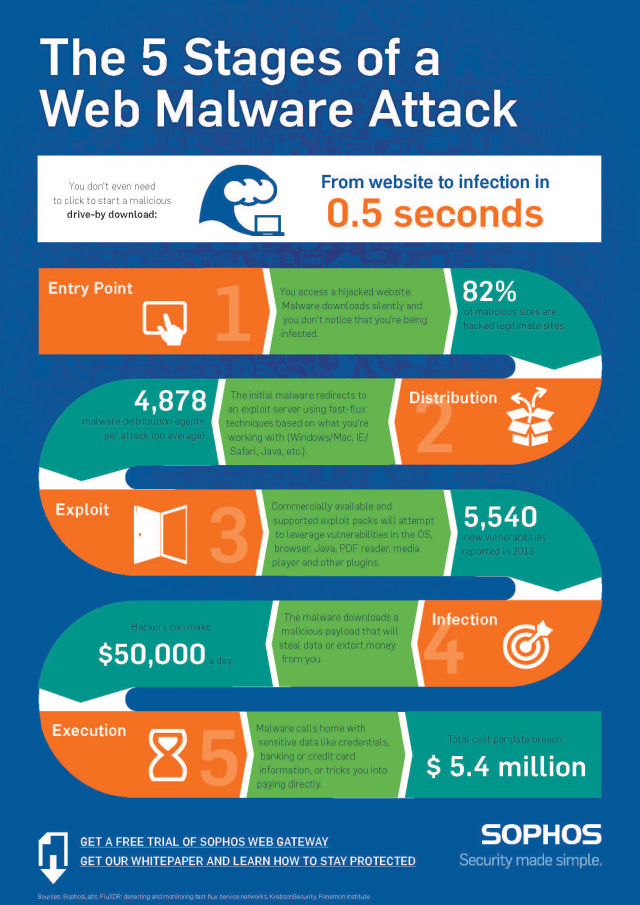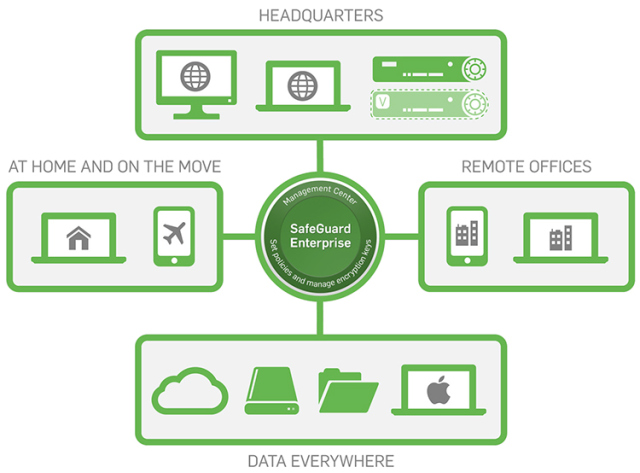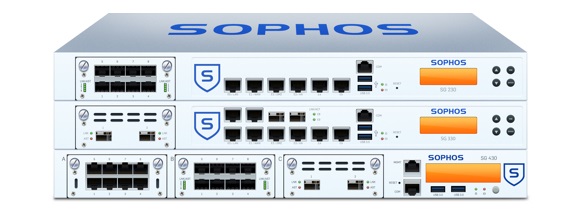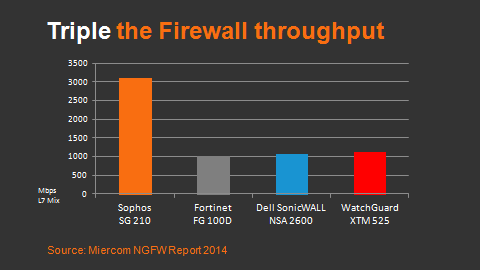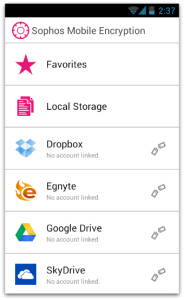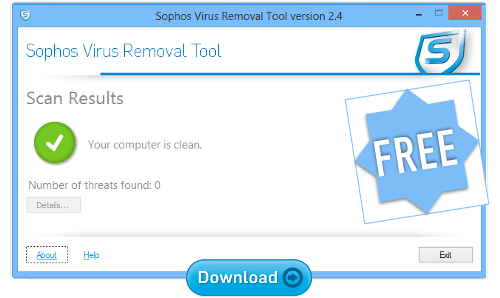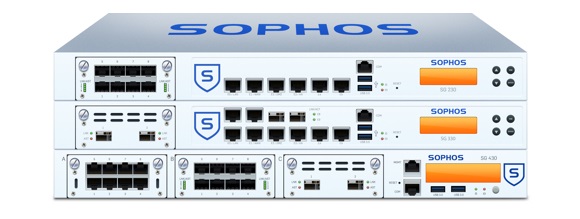News
Jan
Developed by SophosLabs, this new Sophos UTM approach brings together multiple technologies to rapidly identify and isolate infected clients and prevent communication with malicious command and control hosts. This latest version introduces botnet protection and cloud-based sandboxing to expand on the Sophos UTM’s existing multi-layer Firewall, Web, Email and Endpoint protection. This extends the Sophos commitment to small and mid-market companies, delivering access to advanced protection without the complexity and cost normally associated with such functionality.
“The initial stages of targeted attacks can often go unnoticed by security systems that don’t control incoming and outgoing traffic. For organizations with limited IT resources, investing time and money in a dedicated ATP solution to detect these early signs is simply not realistic, given how tricky, complex and fast moving this type of traffic is,” says Chris Kraft, vice president, product management, Sophos. “That’s what we wanted to change. Today, with a few simple clicks, users get advanced protection without needing to be full-time security experts themselves.”
This new release also significantly enhances the speed of security scanning, with initial data showing the new performance optimized IPS doubling throughput speed in test environments. The Email, Web, and Network Protection modules all experience significant enhancements, including:
- Simplified Email Encryption and DLP – Sophos SPX technology eliminates need for a separate Public Key Infrastructure and policy-based DLP can trigger automatic encryption
- Smarter Web Control – streamlined policy setup enables granular user control and transparent web filtering of https traffic provides seamless protection
- Mobile Access Control – enhances Wi-Fi and VPN security by combining Sophos UTM with Mobile Device Management functionality in Sophos Mobile Control
- Performance Optimized IPS – intelligent processes and pattern management deliver enhanced scanning speeds to rapidly block network attacks and prevent breaches
- Botnet/Command and Control Protection – Sophos Advanced Threat Protection identifies and blocks infected machines communicating with malware command and control servers
“The UTM market is one of the most competitive in security. Numerous features and applications have been added over the past few years, and we’re increasingly seeing solutions are providing more effective security and better performance,” said John Grady, Research Manager, Security Products and Services, IDC. “This latest release from Sophos continues to simplify complex technologies. SPX email encryption is an example of that and is a differentiated approach among other UTM vendors.”
“Students are smart and always find ways to circumvent security, so schools are always in need of better ways to manage their web access and block inappropriate content,” says Bart Wilson, systems support manager, from Twotrees Technologies LLC, a Sophos partner. “UTM 9.2 is a huge step forward in solving this problem. By adding https traffic to web filtering in transparent mode, Sophos will help our customers to take back control – especially with so many students browsing on mobile devices.”
For additional information on all of the features in Sophos UTM 9.2 and extra information on Sophos’ network security solutions, please visit our Network Security area, watch the UTM videos, or check out the dedicated Sophos UTM blogs.
You can read the original article here.
Jan
A ‘channel-first, channel-focused’ company, Sophos continues to receive impressive recognition from CRN/The Channel Company, mostly recently with Michael Valentine, senior vice president, worldwide sales, and Kendra Krause, vice president of channel sales, North America, being named Channel Chiefs just last month. Late last year, Michael Valentine was also named a top IT executive for the mid-market.
Sophos enables partners to sell, market, distribute and implement its award-winning cloud, network, server and enduser protection solutions to organizations of all sizes. The company recently announced a new partner program for North America which includes a simplified deal registration and discount structure, full access to the Sophos product and solution portfolio, sales and marketing tools, training and technical enablement, and significant investments in local channel sales and SE resources.
To determine the 2014 5-Star recipients, The Channel Company’s Research team assessed each vendor’s application based on investments in program offerings, partner profitability, partner training, education and support, marketing programs and resources, sales support and communication.
“Solution providers have a lot of choices when it comes to selecting vendor partners. Identifying the right vendor, with the right technologies, and the right approach can make all the difference,” said Robert Faletra, CEO, The Channel Company. “Our annual Partner Program Guide and 5-Star rating recognizes the very best channel programs available in the market today to help solution providers determine which vendor delivers the best partner elements for their individual business goals.”
John Keenan, vice president of sales for North America, Sophos, said, “Receiving 5-Star recognition from CRN is validation that our strategy is working. From the highest levels, the Sophos team works hard to demonstrate our commitment to the channel in everything we do. We believe investing in those partners who commit to growing their business with us is a smart, simple approach to building lasting relationships and growing revenue. We’re honored to receive positive accolades that come as a result of that approach.”
For more information on the Sophos Partner Program, visit the Sophos website or to learn more about becoming a Sophos partner. The 2014 Partner Program Guide will be featured on CRN.com and the 5-Star Partners listing will be highlighted in the April issue of CRN.
You can read the original article here.
In the spirit of sharing our knowledge, we’d like to show you a pretty great infographic that explains in visual format how a web attack works. As you can see in the infographic below, a web attack happens in five stages, and this whole process takes less than a second. The web is the number one source of malware (a term that combines “malicious” and “software”), and the majority of these malware threats come from what is called a drive-by download.
5 Stages of a Web Attack
The term drive-by download describes how malware can infect your computer simply by visiting a website that is running malicious code (Stage 1: entry point).
Most of the time, these are legitimate websites that have been compromised to redirect you to another site controlled by the hackers (Stage 2: distribution).
Today’s cybercriminals use sophisticated malware packaged in an “exploit kit” that can find a vulnerability in your software among thousands of possibilities.
When your browser is redirected to the site hosting an exploit kit, it probes your operating system, web browser and other software (such as your PDF reader or video player) to find a security vulnerability that it can attack (Stage 3: exploit).
Remember — if you are not applying security updates to your operating system and software, you are unprotected against these exploits.
Once the exploit kit has identified a vulnerability, that is where Stage 4: infection begins. In the infection phase of an attack, the exploit kit downloads what is known as a “payload,” which is the malware that installs itself on your computer.
Finally, in Stage 5: execution, the malware does what it was designed to do, which is mainly to make money for its masters.
The malware known as Zbot can access your email or bank accounts. Another type of payload called ransomware can hold your files hostage until you pay to have them released.
This kind of attack happens all the time. But you don’t have to be a victim. Download our checklist of technology, tools and tactics for effective web protection to find out how you can protect your organization from malware attacks at every step of the way. You should also check out our free whitepaper explaining how malware works and offering tips to help you stop it: Five Stages of a Web Malware Attack. (Registration required).
You can read the original article here.
Jan
In particular, the overhead of running multiple concurrent antivirus scanners on a single host can affect performance and scalability. Meanwhile, the constant starting, stopping, and cloning of virtual machines can leave systems unprotected.
A new Sophos whitepaper explores these challenges and presents two effective approaches to securing your virtual machines without sacrificing performance: agentless antivirus and virtualization-optimized endpoint security. Simultaneous scheduled or on-demand scans can lead to a “scan storm,” increasing resource use and decreasing system performance.
“Scan storms occur when a host’s resources are overwhelmed by many virtual machines (VM) running antivirus scans at the same time. Because each VM is engaged in nearly identical behavior requiring multiple input/output (I/O) operations and substantial CPU processing, data throughput and system response time can slow noticeably. Even an otherwise speedy SAN or local storage array can be affected by the sheer volume of simultaneous read requests.”
The paper also covers how to choose the best approach and the right Sophos product (Sophos Antivirus for vShield, Sophos Server Protection, or Sophos Endpoint Antivirus) for your needs.
Download “Two Great Ways to Protect Your Virtual Machines From Malware” to learn more about how to deliver performance and security in your virtual data center (registration required).
You can read the original article here.
- Πως μοιάζει το νέο Κέντρο Διαχείρισης;
- Ποια λειτουργικά συστήματα υποστηρίζονται και ποιοι clients είναι διαθέσιμοι;
- Ποια είναι η διαφορά μεταξύ των UEFI και BIOS και γιατί χρειάζεται να το ξέρετε αυτό όταν πουλάτε ή εγκαθιστάτε το SGN;
- Μπορούμε να υποθέσουμε ότι η Native (Γηγενή) Κρυπτογράφηση είναι ίδια με το SafeGuard Enterprise Device Encryption;
- Μπορούν οι υπολογιστές Mac της Apple να διαχειρίζονται κεντρικά;
- Τι είναι και γιατί το FileVault 2 ενδέχεται να είναι απαραίτητο;
- Τι περιλαμβάνει η άδεια χρήσης SGN;
Σήμερα, ευαίσθητα δεδομένα βρίσκονται παντού, στο cloud, σε φορητές συσκευές και προσωπικούς υπολογιστές. Ο στόχος είναι η προστασία τους, χωρίς θυσίες στην απόδοση και η Sophos έχει τη λύση με το SafeGuard Enterprise 6.1, το οποίο προσφέρει κρυπτογράφηση, οπουδήποτε και αν βρίσκονται τα δεδομένα –σε υπολογιστές Windows, Mac, σε αφαιρούμενα μέσα αποθήκευσης, σε δίσκους στο δίκτυο, σε φορητές συσκευές ή στο cloud, χωρίς καμία επίπτωση στην απόδοση.
Με το SafeGuard Enterprise 6.1, η Sophos διευθετεί τα δύο μεγαλύτερα ζητήματα στην κρυπτογράφηση -την απόδοση και τη χρηστικότητα- εκμεταλλευόμενη την ενσωματωμένη κρυπτογράφηση του λειτουργικού συστήματος (Bitlocker στα Windows, FileVault 2 για Mac) για καλύτερη απόδοση και προσφέροντας multi-platform διαχείριση για όλες τις συσκευές και τα περιβάλλοντα cloud.
Θέλετε να μάθετε περισσότερα;
Σας περιμένουμε στο 4o Infocom Security όπου απαντάμε στις προκλήσεις του μέλλοντος.
Ώρα 12:30 – 14:15 στην 2η ενότητα «Ευφυείς Λύσεις για την Προστασία των Πληροφοριών»
We also found out that the Heartbleed bug is in a version of the OpenSSL software that’s two years old — so this vulnerability could have been attacked for a very long time by someone with the resources to exploit it.
Sophos security experts helped us to understand Heartbleed and what it means, how to protect yourself, and why we should all be thankful for open source software, even if it’s not perfect.
Chester Wisniewski, Sophos senior security advisor, let us in on what Heartbleed is and why it’s so important for security on the Internet. Chet explained that OpenSSL sends a small packet of data back and forth between web servers to make sure the connection is still working, what’s called a TLS Heartbeat.
Only now it turns out that web servers could be tricked into sending huge amounts of system-stored data in response to a Heartbeat ping — data which could include passwords and encryption keys. In an opinion column published on CNN.com, Chet described how two-thirds of all websites were vulnerable to Heartbleed. Fortunately, most major Web services have already applied fixes to the affected Web servers and services. The bad news is that smaller websites as well as many companies’ products that rely on OpenSSL may linger for many more years without a fix.
Chet told BuzzFeed that an even bigger concern is who might have known about the Heartbleed bug before the rest of us caught on — and the most likely organization to know would be the U.S. National Security Agency (NSA), which has the means and an interest in finding such vulnerabilities.
“That’s exactly what the leaked NSA programs are supposed to do: Find the flaws, exploit them and never tell anyone,” Chet said. According to Chet, the “open” part of OpenSSL means this vital security software is maintained by volunteer researchers, not commercial interests. And that means we should be focusing our attention on supporting the open parts of the Internet that we rely on for freedom of communication.
All of us have come to rely on the Internet socially, politically and economically. The billions of dollars a year being made by the tech giants would not be possible without the millions of donated hours that maintain free and open software like OpenSSL, Linux, Apache Web server, and Postfix mail server.
You can read the original article here.
Jan
Important: This article may continue to be updated with further advice. We therefore recommend you check back here regularly for new information.
Applies to the following Sophos product(s) and version(s)
- Sophos UTM
- Sophos Anti-Virus for VMware vShield
For information relating the vulnerability to other Sophos products see:
Is SafeGuard Enterprise affected by the recently identified OpenSSL leak in versions 1.0.1 to 1.0.1f (cve-2014-160)?
Is Sophos Mobile Control affected by the recently identified OpenSSL leak in versions 1.0.1 to 1.0.1f (cve-2014-160)?
What is the vulnerability?
The official CVE is tracked here and mentions versions of Open SSL used in some Sophos products (see below).
The vulnerability described uses a TLS heartbeat read overrun which could be used to reveal chunks of sensitive data from system memory of any system worldwide running the affected versions of OpenSSL – but only exposed services are immediately affected, as the bug allows to be read from the processes own memory.
For more information read our naked security blog article on the issue: Anatomy of a data leakage bug – the OpenSSL “heartbleed” buffer overflow
What versions of Open SSL are affected?
1.0.1 and 1.0.2-beta releases of OpenSSL are affected including 1.0.1f and 1.0.2-beta1.
What products are affected and how is the vulnerability fixed?
The table below lists all the affected Sophos products. Important: Though other products may use SSL these are not affected and no action is required.
If you use one or more of the products mentioned below use the table to guide you on what is required.
| Sophos Product | Steps to fix |
|
UTM 9.1
UTM 9.2 |
A patch is available for the vulnerability in UTM 9.1. The overview steps are: Install the patch For detailed instructions see article 120851. |
| UTM LiveConnect Servers | Patched April 9, 2014 |
| UTM Manager 4.105 |
Patched in 4.106, available now. See: http://blogs.sophos.com/2014/04/10/sophos-utm-manager-up2date-4-106-released/ |
| SAV for vShield |
A patch for version 1.1 will be made available early next week. |
Important: There are three primary requirements to patch the OpenSSL vulnerability, protect yourself from any future exploit attempts and to mitigate any security vulnerabilities if your certs have already been compromised
- Apply the OpenSSL Patch
- Regenerate all SSL certs
- Change all passwords
Where do I get the Patch and instructions to Renegerate all SSL Certs?
The currently available patches for UTM are listed in article Heartbleed: Recommended steps for UTM. We will add details on other patches as soon as possible. Check back HERE for updates.
Jan
Peplink has verified and confirmed that all of the products are not affected by this vulnerability – including Balance, MAX, FusionHub, AP One/Pro, Surf, Device Connector families. As for the online services, they are either unaffected or Peplink has been able to apply mitigation to fully resolve the issue. There is no customer action required on your part.
Thank you for your attention.
The Peplink Team
You can read the original article here.
Jan
This data can include sensitive material such as the server’s private key, but is not limited to that, any data that is in memory on the server is at risk including sensitive customer data as well. This is not limited to web servers, if you use a SSL based VPN that leverages OpenSSL you may also be at risk. Access to this type of sensitive data creates a serious vulnerability because attackers can use it to decrypt past communications (when Perfect Forward Secrecy (PFS) is not configured), steal critical data and in the case of a private key compromise, enable the attacker to impersonate the associated server.
Resolution and Recommendations
We strongly recommend anyone using OpenSSL to:
- Verify what version of OpenSSL they are using and upgrade their systems to the appropriate fix from OpenSSL.
- Request a reissue (with new private key) for SSL Certificates that were installed on affected servers, install the new certificate, then request revocation of the old certificate.
- Use GlobalSign’s SSL Configuration Checker tool to test your server for the Heartbleed vulnerability
GlobalSign offers free reissues to its direct customers, so if you are a GlobalSign SSL customer affected by the Heartbleed bug, please see our support center for instructions on reissuing your SSL Certificate.
You can read the original article here.
“The new Sophos SG Series appliances are the fastest UTM and Next-Gen Firewall devices we’ve ever produced,” said Guenter Junk, Senior Vice President and General Manager, Network Security Group, Sophos. “They run our latest operating system, version 9.2, and are optimized to get the most out of latest performance innovations from Intel to ensure our customers and partners get an unrivalled performance and protection combination.”
The new SG Series includes models to meet the requirements of small offices to large, distributed enterprises. These 1U appliances are available today in the mid-range 200, 300 and 400 models. They all deliver over 10 Gbit/sec firewall throughput to easily handle the demands of multi-layered protection. The SG Series is the 6th generation of Sophos security gateways built on an Intel® architecture, to enable Sophos customers to quickly benefit from the frequent performance and protection enhancements. They utilize Intel® technologies including high-speed LAN interfaces, high volume Solid State Drives and AES-NI acceleration.
“By using Intel® Architecture, Sophos has been able to use the performance gains we’ve been able to deliver with the 4th Generation Intel Core processors which delivers improved software processing architecture,” said Bob Ghaffari, Director, Communications and Storage Infrastructure Division, Intel. “Sophos has been able to see dramatic performance improvements by unlocking Intel’s core processor capabilities to make fast, intelligent decisions.”
The SG Series run the latest Sophos UTM 9.2 operating system which features over 150 enhancements including new Advanced Threat Protection and SPX Email Encryption functionality. Designed to run on an Intel architecture, version 9.2 can also be deployed on Intel compatible servers as virtual appliances and in the cloud using Amazon Web Services.

Bruce Kneece, Chief Technology Officer at Convergent Information Security Solutions, said, “Our team was heavily involved in the UTM 9.2 beta program. From the outset we liked what we saw – added performance and simplicity across the board. Version 9.2 running on the SG Series hardware is a true winner. It’s easy for us to recommend it to our customers.”

Additional information on all of the features in Sophos SG Series appliances and Sophos network security solutions is available at: www.sophos.com/accelerated.
In our recent UTM 9.2 release we accelerated our Intrusion Prevention System (IPS) – to do so we made changes to the underlying engine and worked at making our IPS smarter with new optimized default rule sets. We’ve been getting great reports from customers and partners about the speed boost they’re seeing.
But it’s not just software that can boost performance — it’s pretty obvious the hardware it runs on plays a critical role too. That’s why we’re releasing some new security gateway appliances that we’re calling our SG Series appliances.
These are the fastest appliances we’ve ever built. When we started the refresh project we would have been pleased with a 50% speed increase, and we were hoping we’d be able to double the speed. When our engineering team ran our benchmark tests the results were impressive — the new SG Series is up to four times faster than its predecessors. Now it’s all very well beating your own personal best but for us the real question was how would they fare in a race – just how do they stack up to the competition?
So we asked Miercom Labs, a respected testing house, to run tests. And the results were proof that we’ve built some appliances that will provide Sophos customers and partners with the best price/performance ratio anywhere in the market.
This first chart shows a comparison on firewall throughput. Now it’s important to note these results aren’t from some special, high end box targeted for thousands of users. These are from the SG 210; a mid-range model which is offered at a great price point that any business can afford.
And this performance advantage is seen not just on raw Firewall speed. The chart below shows results with Application Control enabled, a key component in next generation firewalls. As you see, our hard work paid off here as well.

And as you know Sophos has a great heritage in virus scanning and here our expertise really shows. Just look at the AV scanning numbers in the chart below.

This test compares AV proxy scanning which is widely known to be the most effective form of scanning because it looks at the entire file rather than taking shortcuts. But not everybody can do it “at speed,” and as you can see some don’t offer it at all.
The complete report from Miercom Labs will be published soon but as we announce the availability of the new SG Series appliances I just wanted to share some of the great results we are seeing. And as we extend the SG Series and continue to optimize our software here’s to even faster, even better protection!
You can read the original article here.
Download the Sophos Mobile Encryption app from Google Play for Android, or from iTunes for iOS devices (iPhones, iPod Touches and iPads).
New features available in this version
- Protect access to your Sophos Mobile Encryption application with an optional password.
- Fully transparent key management, so you don’t need to enter the passphrase each time you open a file.
- Store your encrypted files in the local storage area within the app. Local storage is also accessible via USB from your PC or Mac.
- Encrypt and upload files handed over by applications from cloud storage providers.
- Supported cloud storage solutions: Dropbox, Google Drive, Microsoft One Drive (former SkyDrive), Egnyte, Telekom Media Center, WebDAV (e.g., Windows Server, ownCloud or Strato HiDrive)
Sophos Mobile Encryption for Android
Download the Sophos Mobile Encryption app from Google Play for Android devices. Requires Android 2.3.3 and up.
Sophos Mobile Encryption for iOS
Download the Sophos Mobile Encryption app from iTunes for iOS devices. Requires iOS 5.0 or later. Compatible with iPhone, iPad, and iPod Touch. This app is optimized for iPhone 5.

For business users: You can get Sophos Mobile Encryption together with the optional SafeGuard Enterprise Encryption for Cloud Storage module. The app extends access to encrypted files to mobile devices –for persistent encryption wherever your users are working.
You can read the original article here.
UTM Series appliances will remain an important part of our hardware appliance portfolio and continue to enjoy all the great new features and enhancements that come with every software update. Our UTM Series delivers unmatched value with a great balance of price, performance and protection.
As you know, at Sophos, every feature is available on every appliance — and our UTM Series appliances are no different. And because they are based on an Intel architecture, you can benefit from all future software enhancements and performance optimizations — past, present, and future.
Features you get with Sophos UTM Series
- Intel architecture provides a future-proof upgrade path unlike ASICs
- Same protection on every appliance, from our smallest to our largest
- Cluster up to 10 appliances dynamically without external load balancers
- A range of models at performance and price points to fit diverse environments
- Sophos UTM Series — Eight (8) models suitable for organizations of all sizes
Small: The UTM 100, 110, and 120 are ideal for small organizations or branch offices that have less demanding traffic capacity requirements, but still want the best network protection
Medium: The UTM 220, 320 and 425 provide the optimal balance between performance and protection for a variety of different environments.
Large: The UTM 525 and 625 are designed to protect even the most demanding enterprise networks. They are purpose built for scalability, reliability, and high availability.
UTM Series Tech Specs

Datasheets: UTM 1xx | UTM 220 | UTM 320 | UTM 425 | UTM 525 | UTM 625
You can read the original article here.
Jan
The new release also brings reliability improvements and support for Windows Server 2012 and Windows Server 2012 R2.
SAV for NetApp is also included in the following endpoint products and suites:
Endpoint Protection Advanced
Enduser Protection
Enduser Data Suite
Enduser Web Suite
Complete Security Suite
To learn more, visit the Sophos for Network Storage page or download the free trial.
If you have a current license for one of these products, you can download Sophos Antivirus for NetApp 3.0 on your MySophos download page.
You can read the original article here.
The new Sophos solution helps IT professionals confidently implement BYOD policies and provides users the flexibility they demand to stay productive and safe. It supports iOS, Android and Windows Phone 8 devices.
To learn more about SMC 4.0, check out this video.
SMC 4.0: Mobile Encryption, Integrated Security and User-Centricity
SMC 4.0 provides a simple, hassle-free and comprehensive approach to protecting mobile devices. With Mobile Content Management for iOS devices, SMC is the only EMM solution to offer file-level encryption, which gates access to each file, to protect the data in the office and on the go. SMC also delivers integrated security against malware and malicious web sites for Android devices, which account for 80 percent of smartphone operating systems* worldwide as well as the majority of mobile malware threats. The number of unique pieces of mobile malware seen by SophosLabs has now reached almost 900,000 and is growing rapidly.
With web protection for Android, IT administrators can select web site categories to control access and block data-stealing or inappropriate web pages. SMC 4.0 also provides unique integration with Sophos UTM, Checkpoint and Cisco to provide network access control. Compromised devices are isolated from the network, protecting the organization’s assets from malware on mobile devices. SMC’s user-centric deployment, management and pricing greatly simplifies administration. With an intuitive web-based management console, IT administrators can provide their users with a self-service portal to change passwords, register devices and report lost or stolen devices.
You can read the original article here.
Jan
So here are some tips on how you can use Sophos products to maintain security for your yet-to-be-decommissioned XP systems during the transition period.
1. Run the Sophos endpoint
With the Sophos endpoint you will of course get our award-winning anti-malware scanner, but you’ll also get Host Intrusion Prevention System (HIPS), Application Control, and Patch Assessment (if you are licensed for it).
- Using HIPS is easy and requires no work on your part — HIPS is enabled by default. The guys and gals at SophosLabs are constantly tweaking the detection rules for HIPS to make sure we detect and block exploits of new vulnerabilities.
- By using Application Control you reduce the threat surface further by blocking thousands of applications from running at all.
- Bonus tip: While you are at it, make sure you uninstall any software on your XP systems that isn’t absolutely necessary.
- Our endpoint is also available with Patch Assessment. Use this to find vulnerable software on your XP machines. Missing patches will be listed in order of priority starting with the most critical (currently exploited), making it easy for you to decide where to start.
2. Use Sophos Client Firewall
Sometimes overlooked, the client firewall allows you to really lock down the machine as much as you like — to the point of making it near unusable if you so wish!
- Train the firewall to only allow traffic to and from your known good processes.
- You can also enable checksumming to identify known processes. It’s more secure, but will require more work from your side to maintain.
- You can also manage ICMP request to stop the system from responding to Ping requests.
Learn more about Sophos products
Those are the choices for the top two technologies you really should consider for any remaining XP systems. There are more you can use. I haven’t mentioned Device Control, Data Control, Web Control or Full-Disk Encryption — they all play a part in endpoint security. Or you may want to take it one step further and take full control of the network traffic using our SG Series network appliances. Your requirements will of course vary. In any case, we will have a product that can help you stay secure and it will be as easy as possible to implement.
You can read the original article here.
Authorities have apparently taken control of the Gameover bots and seized its command servers over the weekend, effectively freeing 300,000 of the 500,000 to 1 million infected Windows computers. Even better, they’ve found the crime ring behind the botnet and have charged alleged Russian mastermind Evgeniy Mikhailovich Bogachev with hacking, different types of fraud, money laundering and conspiracy.
Gameover Zeus, for those who’ve never heard of it in the past, is a P2P malware that pilfers banking information and initiates wire transfers to overseas bank accounts. It’s typically propagated through spam emails disguised as bills or invoices embedded with malicious links — the kind you tell your grandparents to never click. Once Gameover worms its way into a system, that computer becomes part of the extortion ring’s global network of infected machines, which funnel ill-gotten info back to the criminals. The perpetrators would sometimes also install compromised PCs with Cryptolocker, a “ransomware” that takes users’ files hostage until they pay up. According to the FBI’s estimates, the criminals have stolen over $100 million using both Gameover and Cryptolocker. But whether that’s enough for Bogachev to stand trial in the US (home to 25 percent of the affected machines) remains to be seen, as Russia does not extradite accused criminals. For now, all the authorities can do is spread word about the botnet and help people remove it from their computers.
The next stage – the part of the operation that is the duty of all of us – is to dismantle the rest of the botnet, by progressively disinfecting all the zombie-infected computers that made the Gameover and Cryptolocker “business empires” possible in the first place. US-CERT has come up with a whole list of free tools so you can do just that, and (if you are the go-to person for IT problems amongst your friends and family) so that you can help others, too. The Sophos Virus Removal Tool is amongst the recommended cleanup utilties. It’s a free download; you don’t have to uninstall your existing anti-virus first; and it detects and cleans the same malware, including rootkits, that Sophos Anti-Virus knows about, not just CryptoLocker.
The Balance 50 features our advanced load balancing and failover. It supports PepVPN, so it can act as a SpeedFusion endpoint for branch VPN networking. Plus, it offers everything else customers love about the Balance 20/30. And the Balance 50 delivers speed and reliability to spare, even when individual connections slow down or drop out.
Download the datasheet for more information on the Peplink Balance 50 multi-WAN router. For pricing details and to stock up today, visit the online cart.
It features user-based management, reporting and licensing; built-in web security to prevent user access to malicious and infected websites, and new policy-based Web Control features to enforce safe and productive web usage. Sophos Cloud is effortless to deploy and easy to use and manage for IT managers and channel partners, given its simple, intuitive user experience.
A recent Sophos survey of IT managers highlighted the growing challenge of device diversity across their organizations, with a need to support Windows PCs, Macs and mobile devices: 78 percent support or plan to support Macs on their corporate networks, and 41 percent see the number of Macs increasing in their corporate environments. A recent IDC study showed that a quarter of SMBs are using mobile device management (MDM) and Sophos is the number one solution. However, 75 percent still have not adopted MDM and with this new release Sophos has made it simpler than ever for those customers to get control of their mobile devices to secure their future. Clearly organizations need an integrated security strategy to support users’ demands to choose their own device (BYOD), while providing IT managers real-time visibility and access to information to keep organizations safe from advanced threats. Sophos Cloud delivers a simple and effective approach for IT organizations to confidently embrace BYOD and to support and protect the wide range of user devices in their environments.
Based on the same proven technology that protects over 100 million devices worldwide, Sophos Cloud is a smart choice for global organizations. It delivers effective mobile device management to keep users productive and corporate information secure. The new web features enable IT managers to easily set and enforce policies for enhanced security and compliance; user-based policies can be created once and rapidly deployed across multiple groups and platforms, and follow the users and their devices even when they are off the network. Sophos Cloud also adds Active Directory synchronization to simplify deployment and management for users and groups.
“IDC predicts that the continuing SMB productivity push will drive cloud and mobility adoption, in a big way; in the U.S., 1/3 of small businesses and almost 3/4 of mid-sized firms are using the cloud, and the share will continue to grow,” reports Raymond Boggs, research vice president at IDC. “Sophos Cloud can help manage security across Windows, Mac, and mobile devices, which is especially important given the diversity – some might say chaos – of an SMB environment. Its user-based management is well suited to SMBs looking to secure users of corporate devices or their own BYOD equipment. Sophos Cloud will be a useful resource for channel partners to leverage in helping support the resource-limited IT teams of their SMB customers.”
“We’re pleased to deliver this new release of Sophos Cloud, as it’s another positive step in our strategy to use the cloud to create new, innovative solutions to the ever-increasing security challenges faced by small and mid-market businesses today,” said Bill Lucchini, vice president and general manager of Sophos Cloud. “Sophos Cloud is a differentiated offering that enables IT professionals to simplify security management without compromising users’ demands for usability and performance. We continue to address the market’s desire for powerful simple-to-use solutions to combat the evolving threat landscape. Sophos security delivered with cloud simplicity is clearly resonating with our customers and partners.”
Sophos Cloud: Ideal for IT Solutions Providers
Consistent with Sophos’ commitment to its channel partners, Sophos Cloud enables IT solution providers and outsourcers to deliver value to customers. A unified web-based management console, hosted in the cloud by Sophos, enables complete protection for users and devices, and a new partner dashboard gives partners visibility into, and control over, their customers’ subscriptions, devices and policies.
Sophos Cloud is currently available. For more information or for a 30-day trial, visit: www.sophos.com/cloud
We want to share a little tip – did you know that we offer an amazing alternative to cheap consumer grade Internet routers?
The difference is, our software is enterprise class, fully maintained and free. Here’s how you can try our Sophos UTM Home Edition and our free Sophos UTM Essential Firewall for businesses.
If you think you need to be truly “unlucky” to be targeted – try putting an unshielded Windows computer or a web server on the Internet and watch it being probed within seconds. This is not a matter of misfortune; it’s a matter of seconds.
Being such a critical piece of equipment you might think firewalls all come as cast iron, industrial strength appliances. But, as has been apparent, this is not the case.
Many times the software is not maintained on these devices. Some are not made to update automatically, or are difficult to upgrade. Or the vendor has simply stopped maintaining the software.
Let us give you some examples security weaknesses we’ve seen recently.
- Admin access: this is the holy grail. Anyone can go in a reconfigure your router.
- UPnP – an autoconfiguring standard to allow devices on your network to open up ports in your firewall
The good news is that the Sophos UTM Essential Firewall (for businesses) and Sophos UTM Home Edition address all the issues I’ve mentioned above.
- We continuously maintain and update the software for it. This means we can make continuous improvements and quickly address any issues.
- We don’t support UPnP so it will never be an issue
- You get remote access so you can access you home network wherever you are without having to open any ports on the firewall
Try our Sophos UTM Home Edition, and our free Sophos UTM Essential Firewall for businesses.
You can choose how you deploy it:
- Use an existing standard PC with at least two network cards
- Install it as a VM in your virtual environment
- Buy a hardware appliance from us
- Or you can geek out completely and even run it in the Amazon EC2 cloud … the possibilities are endless
You can read the original article, here.





